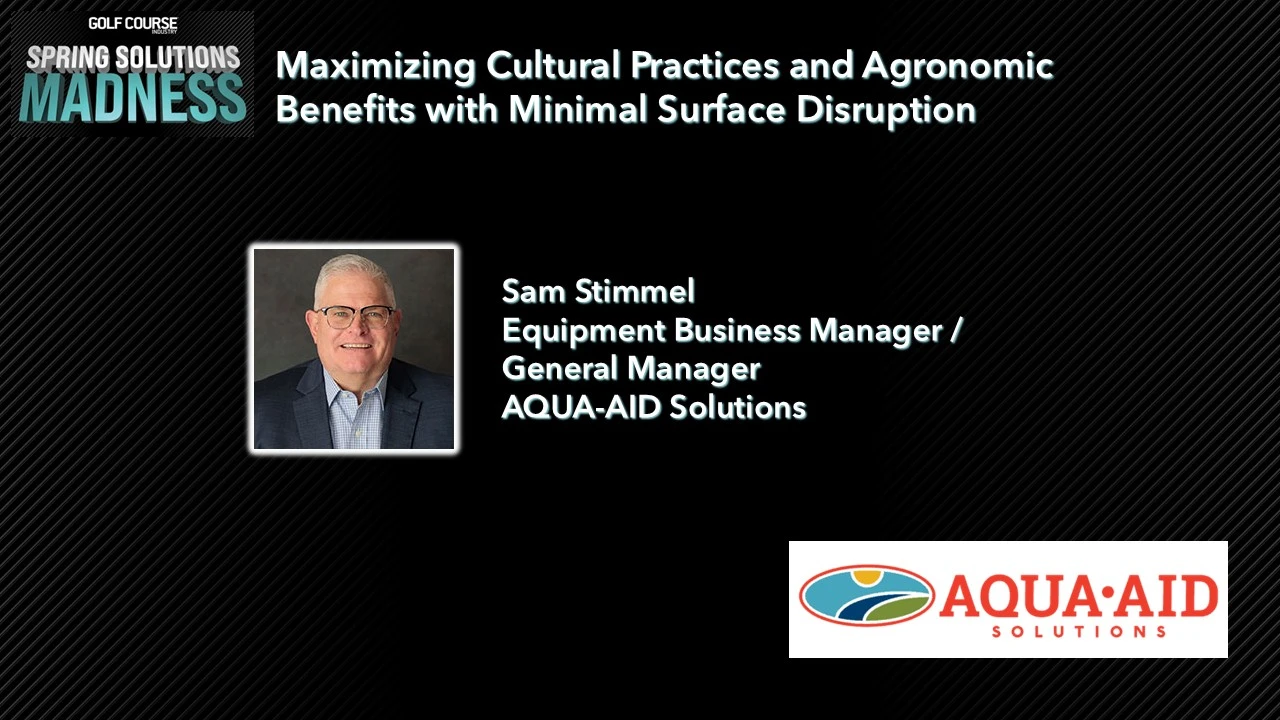I have been talking a lot about the high cost of irrigation systems and I am at it again this month, hopefully this time to belie some misconceptions. As discussed, a bit last month, most irrigation designers try and provide a golf course irrigation system that meets the needs and wishes of the course maintenance staff. That comes with a price. Price is dependent on many factors, but mostly the number of sprinklers. The number of sprinklers then determines pipe size, pump station capacity and how large the control system needs to be. Optional items such as sensors and lightning protection then add to that cost.
You develop a design based on your needs and present the price to the board or owner, and they say it is too expensive. No surprise, but then they say: “We don’t need a Cadillac system, we just need a Chevy.” The system proposed, though, is already a Chevy. How do you convince them of that? But what is the difference between a Cadillac, a Chevy and even a Suzuki irrigation system?
A base irrigation system will be sprinklers and swing joints, pipe and fittings, controls and wiring. The fairway sprinklers will help define the “car” level and it will vary substantially with geography. A wall-to-wall system in Vermont is a Cadillac while in Arizona it’s a necessity (Suzuki). A Suzuki is single row fairway system in many places, a double row a Chevy, a triple row a Buick and a five-row (fairway in and out) a Cadillac. So, unless you have an in and out system on your fairways, you have room to spend even more money. Isolation is another area where you can differentiate. Isolating greens and tees is basic as well as the fairways laterals. Isolating quick couplers is stepping up. Mainline isolation per hole is a Cadillac; isolation every two to three holes is a Chevy. Isolate nine and nine, and we’re back to the Suzuki.
Control systems can also vary, although not all manufacturers have varying levels of control systems available. I will pick on Rain Bird here as it easily illustrates my point. Cirrus, Nimbus and Stratus central control systems: basically Suzuki, Chevy, Cadillac, respectively, subject to interpretation. The more features, the more capacity. The more levels, the more expensive and the more powerful. Fittings are another good example. For PVC, basic is PVC solvent weld cement or gasketed; Chevy ductile iron; Cadillac epoxy coated inside and out ductile iron or mechanical joint. HDPE pipe, Suzuki all saddles; Chevy a combination of saddles and fabricated fittings; Cadillac a combination of saddles, molded fittings and compression fittings.
Of course, there are many other pieces of irrigation equipment that can be part of an irrigation system that many professionals would say are not necessary and portray the system as a Cadillac. Two weather stations as opposed to one, although today maybe as opposed to none; soil moisture sensors; five remote radios versus two or three; iPads versus radios; brass quick coupler swing joints versus PVC; lightning disconnect systems and bunker irrigation systems.
The same can be said for the pump station. Two or three main pumps versus three or four mains; a jockey and a pressure maintenance pump versus just a pressure maintenance pump; back up soft starters versus across the line; computer touch screen or just a touch screen; premium efficiency motors or standard; web-based monitoring, radio or hard wired? The list can go on and on.
Depending on your course and your clientele, you may not consider these choices as options. You may view some of them – or most of them – as a necessity. The point is there are many places where you can reduce costs and many features that can also add cost to an irrigation and/or pump system. To get what you want, you need to become a salesman. Optional features need to be explained as to why they are important for your golf course. For example, a five-row system with ins and outs on the fairways might be needed as you are tight on water and it will save substantial water or your customers like hard, firm fairways and lush, green rough – you cannot do that with a double row system that waters both at the same. Your course may have steep, grassed bunker faces that without separate irrigation have to be hand watered daily. Your system may be difficult to ground, or in a high lightning area, and require enhanced grounding.
Every course is different as is every driver. What is a Cadillac to one course may be a Chevy to another or a Ferrari to some. The irrigation system features need to match the course and the needs of the turf management staff.

Explore the November 2017 Issue
Check out more from this issue and find your next story to read.
Latest from Golf Course Industry
- Disease Discussion 24: Let the turf talk to you
- From the publisher’s pen: Foggy intrigue
- USGA releases Water Conservation Playbook
- Vilamoura Golf courses awarded GEO Certified status
- GCSAA’s Health in Action 5K/2K reaches fundraising goal
- Landscapes Golf Management to participate in data analyzation initiative
- Reel Turf Techs: Carl Michael
- Atlanta Athletic Club approves funding for master plan






